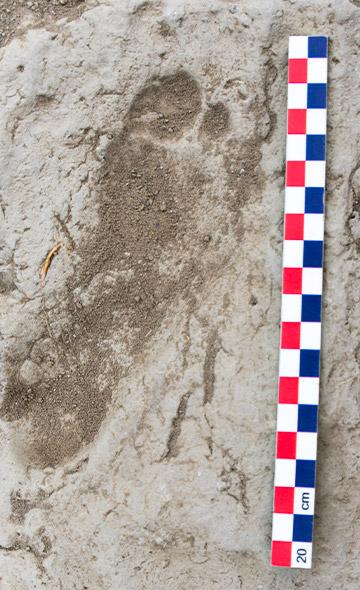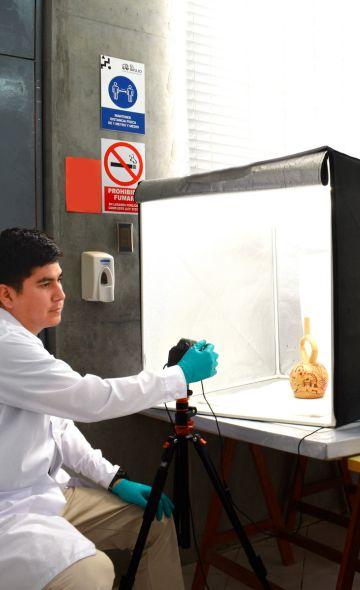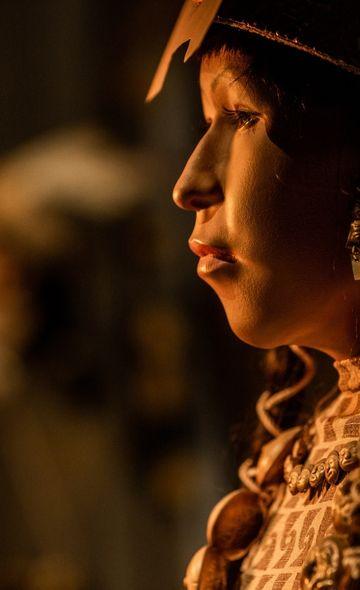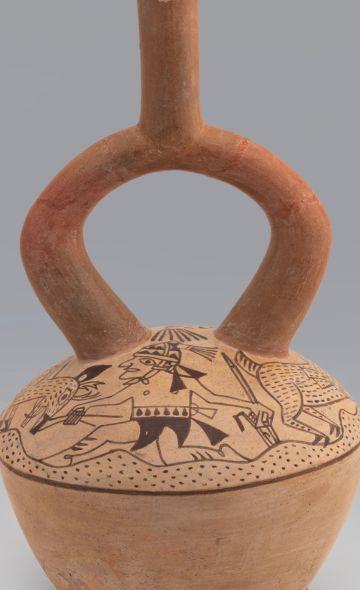- Visitors
- Researchers
- Students
- Community
- Information for the tourist
- Hours and fees
- How to get?
- Visitor Regulations
- Virtual tours
- Classic route
- Mystical route
- Specialized route
- Site museum
- Know the town
- Cultural Spaces
- Cao Museum
- Huaca Cao Viejo
- Huaca Prieta
- Huaca Cortada
- Ceremonial Well
- Walls
- Play at home
- Puzzle
- Trivia
- Memorize
- Crosswords
- Alphabet soup
- Crafts
- Pac-Man Moche
- Workshops and Inventory
- Micro-workshops
- Collections inventory
- News
- Researchers
- Moche childhood seen from the El Brujo Archaeological Complex
News
CategoriesSelect the category you want to see:
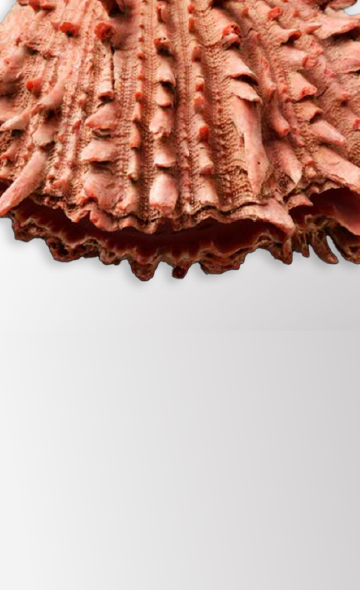
The Use of Spondylus Shells in Moche Ceremonial Contexts: Why Were They Symbols of Status and Wealth? ...
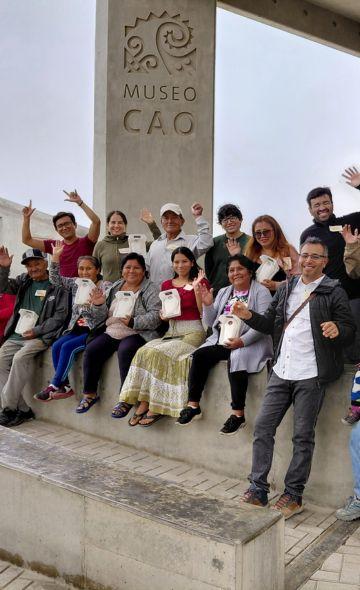
El Brujo Celebrated International Museum Day with Its Community: A Day of Encounter and Cultural Co-Creation ...
To receive new news.
Por: Helen Chavarria Jara y Edson Palomino Rojas
By Helen Chavarria Jara and Edson Palomino Rojas
The family is made up of our grandparents (older adults), parents (adults), older siblings (young adults), and younger siblings (children). In this regard, archaeological data tell us a lot about the life and work of adults, but ... have you ever wondered what did the children of pre-Hispanic Peru do? Or, better yet, what did the Moche children used to do?
Children and their symbology
Children in Moche society, as in other societies, are part of the future and ensure, in some way, the continuity of the group over time. Moreover, they have an important symbolic charge. Hence, they are found as sacrifices, accompanying warriors and priests of great importance.
The offering of children as sacrifices had a great symbolic charge related to the ritual hunting of deer and sea lions. These sacrifices were also used as part of offerings to the culmination of squares and worshiping the ancestors. Excavations at Huaca de la Luna (Bourget, 2001) show us child sacrifices made in response to torrential rains.
For later periods, the Chimú society also made sacrifices for the same purpose: to calm the torrential rains. For example, in Huanchaquito-Las Llamas (Prieto et al, 2014), there are a large number of burials of children accompanied by young camelids, all arranged facing the sea. In this event, footprints of the same infants, adults and camelids were also found, which shows that the sacrifices occurred at a time of rain.
The child-sacrifice relationship is understood as the purity of the first for such an event. But children represent more than this act of giving. The offering is important because the group deprives itself of labor power, and the work force is key to the survival of the social group.
Understanding childhood
It is during our childhood years that we begin to understand what it means to be a person and to interact with the world in the society in which we live. It is in society that girls and boys acquire skills, beliefs and values, where play and work are means of learning that must be adequately guided by the adult for teaching purposes (Kamp 2010: 104). It is during childhood that we learn without wanting to, that we define who we are, that we begin to leave our traces. Literally, said "footprints" have been found in the Huaca Cao Viejo; footprints of the Moche children revealed before our eyes.
Traces of the Moche
Recent archaeological excavations in the Huaca Cao Viejo have left us a set of incredible finds. One of them comes from the construction fillings of the Upper Platform of the huaca, built between the years 500 and 800 AD. During the excavation process we identified a number of adobes with traces of people, which allows us to understand in a certain way who the adobe manufacturers / builders of the huaca were and, in addition, to learn a little more about the children contemporary to the construction and use of the huaca.
The vast majority of the adobes found had handprints on them. We have identified single handprints, two static handprints (right and left), and hands in a dragging position. We found footprints in smaller amounts.
Footprints
Nine human footprints were identified. Samples include rounded heel impressions, visible toes, and kidney-shaped depressions. Finding out whether they were the feet of adults or children was a challenge.
The size is not sufficient evidence to determine the age of the individual in the footprint. Therefore, comparative material was used to help us with the interpretation. The fingerprint data of Heidelbergensis children, dating back 700 000 years (Altamura et al, 2018), comparative data from a sample of Chilean subjects based on their footprint (Sánchez, 2017), as well as standard measures from the WHO (World Health Organization) (De Onis, 2006). We bear in mind that the first reference has a significant time gap with our sample and the WHO data are based on European data. However, for the moment, that is the data available and it is valid to use it, taking into account our imitations. An ethnographic work by the Moche heirs of Magdalena de Cao dedicated to the manufacture of adobes would be an excellent piece of information.
Additionally, Verano's studies (1997: 318) on Moche skeletons were essential to the research. Verano states that the height of an average Moche woman was 146.8 cm and that of a man was 157.6 cm. With this data it was easier to differentiate among the footprint of a man, that of a woman and that of a child, based on their height, rather than on their different shapes. With the measurements of the length and width of the footprints, it was possible to identify a footprint that corresponds to a child.
What does the footprint of a child tell us?
Footprints provide valuable information on the interpretation between work, play and learning. The presence of children during the making of the adobes that were part of the construction fill in the Upper Platform of the Huaca Cao Viejo, between the years 500 and 800 AD, suggests that children used to accompany adults in their construction activities, learning first-hand the tasks necessary for architectural construction, without leaving the care and supervision of parents.
Another explanation is that the footprints may be the record of children playing. This behavior reminds us that educating children is seeing them happy and being part of the game, because in that "doing nothing" the Moche child probably learned to do everything.
BIBLIOGRAPHY
Altamura, F., Bennett, MR, D'Août, K. et al. (2018). "Archeology and ichnology at Gombore II-2, Melka Kunture, Ethiopia: everyday life of a mixed-age hominid group 700,000 years ago." In Scientific Reports. No. 8. Pp1-11.
Bourget, Steve (2001). “Children and Ancestor: Ritual Practices at the Moche site of Huaca de la Luna, North Coast of Peru”. In Ritual Sacrifice in Ancient Peru. E.Benson and A. Cook (eds). Pp. 93-119, University of Texas Press.
De Onis, M. (2006). “Assessment of differences in linear growth among populations in the WHO Multicenter Growth Reference Study”. In Acta Paediatr. No. 95, pp. 56–65.
Kamp, Kathryn (2010). "Between work and play: perspectives on childhood in the American Southwest". In Complutum. Volum. 21 (2), pp. 103-120.
Prieto, Gabriel, Nicolas Goepfert, Katya Valladares and Juan Vilela (2015). “Sacrifices of children, adolescents and young camelids during the Late Intermediate in the Periphery of Chan Chan, Moche Valley, North Coast of Peru”. In: Archeology and Society. No. 27, pp. 255-296.
Sánchez, C. (2017). “Analysis of two evaluation methods of the plantar footprint: Hernández Corvo index vs. Arch Index by Cavanagh and Rodgers”. In Physiotherapy. Volume 39, No. 5.Pp.185-226.
Summer, John (1994). "Physical characteristics and osteological biology of the Moche". In Moche, Proposals and Perspectives. Uceda and Mujica (Editors) .Pp. 307-326.
Researchers , outstanding news


